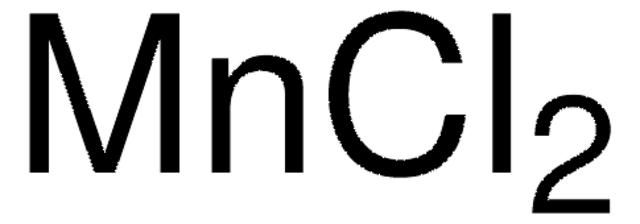208086
Zinc chloride
reagent grade, ≥98%
Synonyme(s) :
Dichlorozinc
About This Item
Produits recommandés
Qualité
reagent grade
Niveau de qualité
Pression de vapeur
1 mmHg ( 428 °C)
Pureté
≥98%
Forme
powder, crystals or chunks
Pertinence de la réaction
reagent type: catalyst
core: zinc
pH
5 (20 °C, 100 g/L)
Pf
293 °C (lit.)
Chaîne SMILES
[Cl-].[Cl-].[Zn++]
InChI
1S/2ClH.Zn/h2*1H;/q;;+2/p-2
Clé InChI
JIAARYAFYJHUJI-UHFFFAOYSA-L
Vous recherchez des produits similaires ? Visite Guide de comparaison des produits
Description générale
Application
ZnCl2 mayalso be used as a catalyst for the Knoevenagel condensation of aromatic aldehydes with substituted acetonitriles to form carbonyl-methylene products under solvent-free conditions. The activation of sugar cane bagasse with zinc chloride forms activated carbons for use as supercapacitor electrodes.
Autres remarques
Informations légales
Mention d'avertissement
Danger
Mentions de danger
Conseils de prudence
Classification des risques
Acute Tox. 4 Oral - Aquatic Acute 1 - Aquatic Chronic 1 - Eye Dam. 1 - Skin Corr. 1B - STOT SE 3
Organes cibles
Respiratory system
Code de la classe de stockage
8A - Combustible corrosive hazardous materials
Classe de danger pour l'eau (WGK)
WGK 3
Point d'éclair (°F)
Not applicable
Point d'éclair (°C)
Not applicable
Certificats d'analyse (COA)
Recherchez un Certificats d'analyse (COA) en saisissant le numéro de lot du produit. Les numéros de lot figurent sur l'étiquette du produit après les mots "Lot" ou "Batch".
Déjà en possession de ce produit ?
Retrouvez la documentation relative aux produits que vous avez récemment achetés dans la Bibliothèque de documents.
Les clients ont également consulté
Notre équipe de scientifiques dispose d'une expérience dans tous les secteurs de la recherche, notamment en sciences de la vie, science des matériaux, synthèse chimique, chromatographie, analyse et dans de nombreux autres domaines..
Contacter notre Service technique



